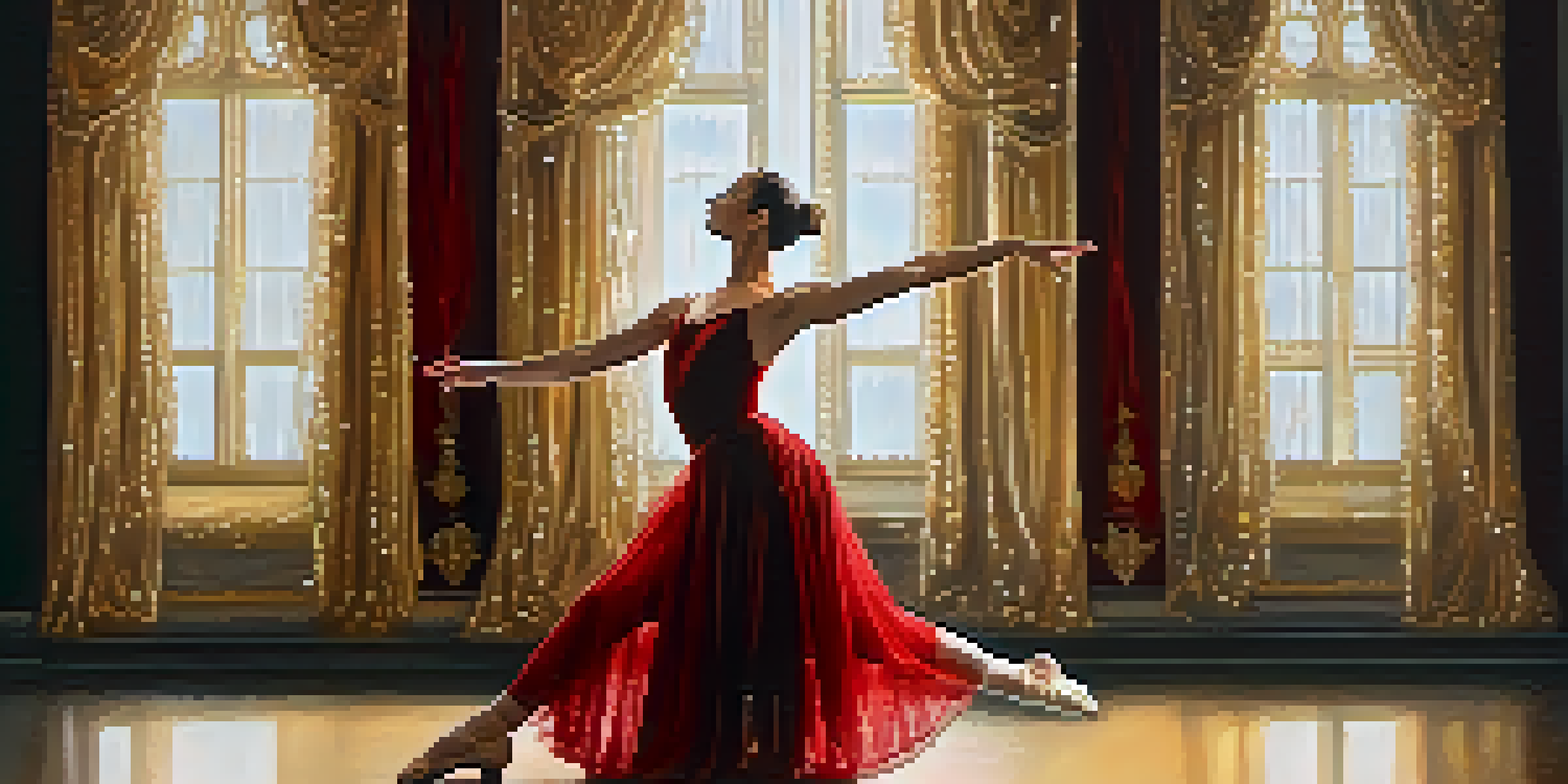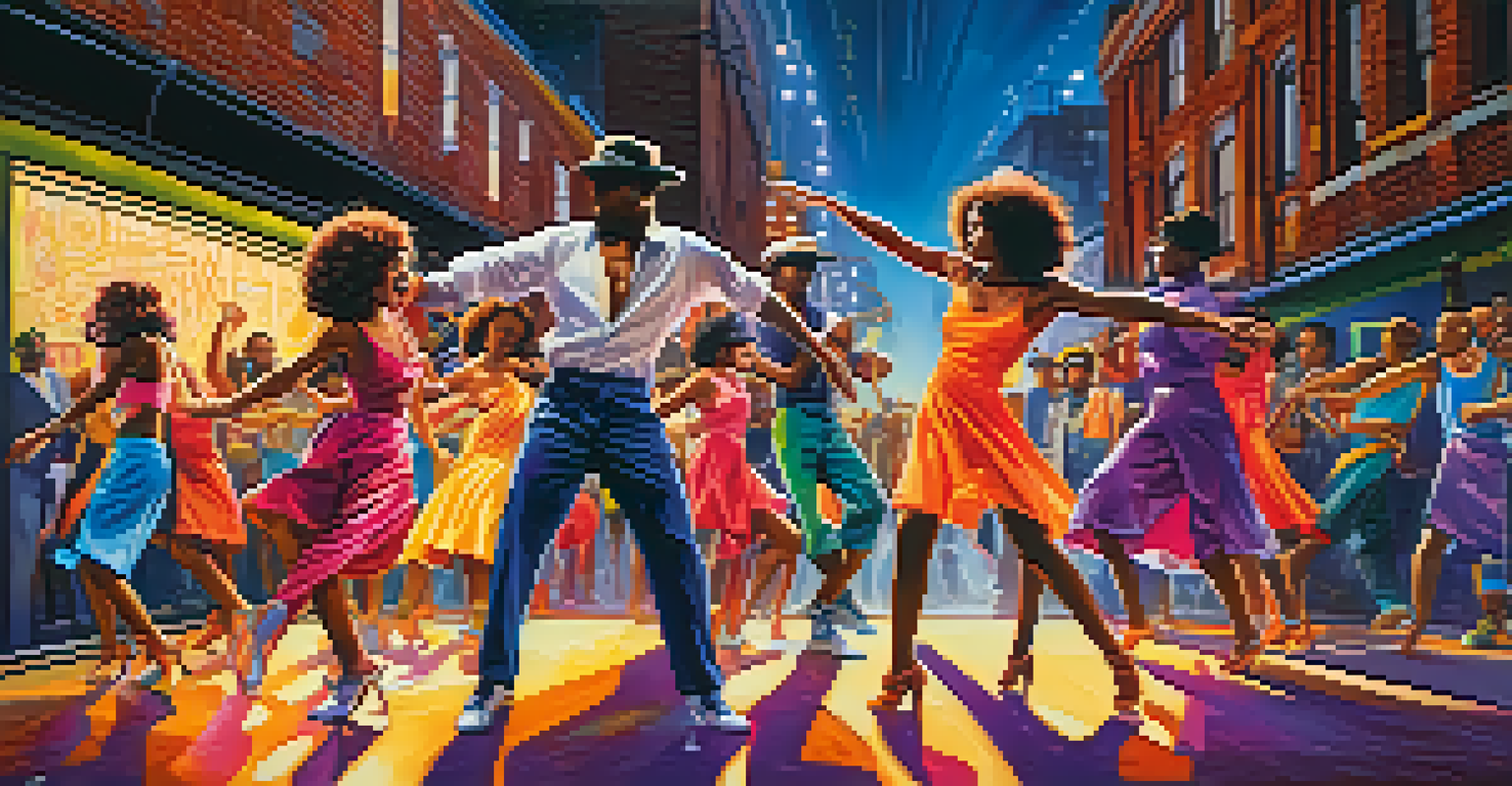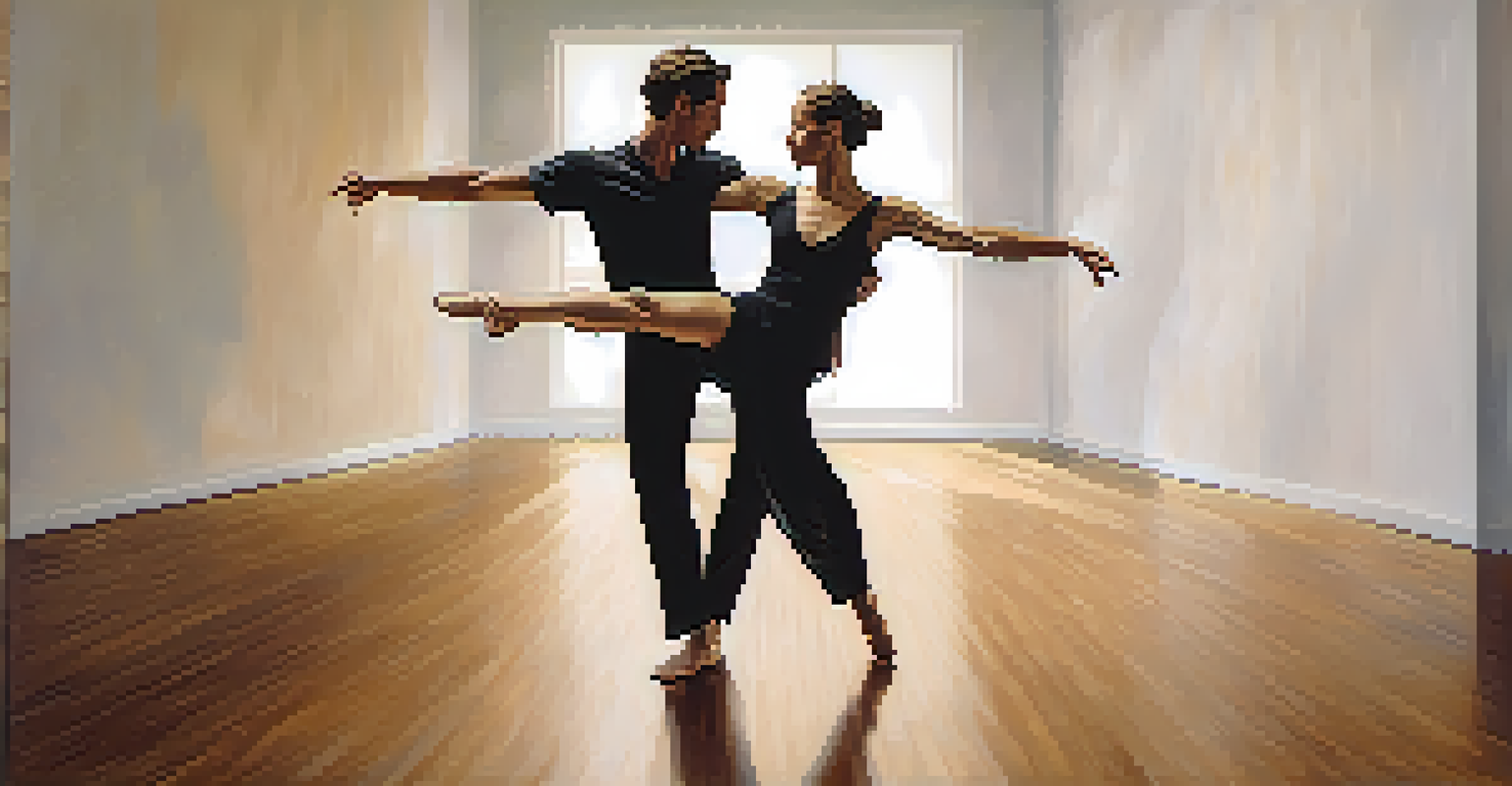Dance Genres in Film: A Study of Styles and Their Stories

The Rhythm of Storytelling: Dance as a Narrative Tool
Dance in film is more than just movement; it's a powerful storytelling device. Through choreography, filmmakers convey emotions and themes that words sometimes can't capture. For instance, in 'West Side Story,' the dance sequences vividly portray the tension and passion between rival gangs, immersing the audience in the characters' struggles.
Dance is the hidden language of the soul.
When characters dance, they often reveal their inner thoughts and conflicts, creating a deeper connection with viewers. This use of dance can transform a scene, making it memorable and impactful. Think of 'Dirty Dancing,' where the iconic dance finale symbolizes love, freedom, and personal growth.
By integrating various dance genres, filmmakers enhance the storytelling experience. From ballet to hip-hop, each style offers unique insights into the characters and their journeys, making dance an essential element in cinematic narratives.
Ballet: Elegance and Emotion in Film
Ballet is perhaps the most classical form of dance in film, often associated with grace and precision. Films like 'Black Swan' explore the intense world of ballet, delving into the psychological complexities faced by dancers. The juxtaposition of beautiful choreography with darker themes creates a riveting narrative.

In 'The Red Shoes,' ballet serves as a metaphor for obsession and sacrifice, illustrating how the pursuit of artistic perfection can lead to turmoil. These films highlight ballet's ability to convey deep emotions, often drawing audiences into the dancer's world.
Dance Enhances Storytelling in Film
Through various dance genres, filmmakers convey emotions and themes that elevate the narrative beyond mere dialogue.
The elegance of ballet not only captivates but also adds a layer of sophistication to storytelling. Its rich history and cultural significance make it a compelling genre that resonates with audiences, both on and off the stage.
Jazz Dance: A Celebration of Freedom and Expression
Jazz dance, with its lively and energetic movements, brings a sense of joy and liberation to film. This genre often reflects the cultural shifts of its time, celebrating individuality and self-expression. Movies like 'Chicago' showcase how jazz can narrate stories of ambition, crime, and redemption through dynamic choreography.
The dance is a poem of which each movement is a word.
'La La Land' also highlights jazz as a key element, using dance to express the dreams and aspirations of its characters. The vibrant dance numbers create a sense of nostalgia, connecting viewers to the golden age of Hollywood musicals.
Jazz dance's improvisational nature allows for personal expression, making it a relatable genre for many. The infectious rhythms and uplifting movements invite audiences to not just watch, but feel the story unfolding on screen.
Hip-Hop: A Voice of the Streets in Cinema
Hip-hop dance has revolutionized the film industry, bringing a raw and authentic energy that resonates with younger audiences. Films like 'Step Up' and 'You Got Served' showcase the competitive nature of hip-hop culture, telling stories of passion, friendship, and perseverance through electrifying dance battles.
This genre often serves as a reflection of societal issues, allowing filmmakers to address themes of inequality and struggle. Hip-hop dance is not just about movement; it's a powerful form of expression that speaks to the experiences of marginalized communities.
Cultural Dance Celebrates Diversity
Incorporating cultural dance in films fosters appreciation for diverse traditions, enriching narratives with authenticity.
By incorporating hip-hop into film, creators bridge the gap between art and activism. The high-energy performances captivate viewers, while the underlying messages encourage a dialogue about the realities faced by many.
Contemporary Dance: Blending Styles for Emotional Impact
Contemporary dance is a versatile genre that seamlessly blends various styles, allowing for a unique storytelling approach. Films like 'The Nutcracker and the Four Realms' utilize contemporary dance to infuse traditional narratives with fresh perspectives. This adaptability makes contemporary dance a favorite among filmmakers.
The emotional expressiveness of contemporary choreography often mirrors the characters' journeys, enhancing the film's narrative depth. By exploring themes of identity, love, and loss, contemporary dance creates a visceral connection between the audience and the story.
As this genre continues to evolve, it pushes the boundaries of what dance can convey in film. Contemporary dance invites viewers to interpret stories in multifaceted ways, encouraging a deeper engagement with the art form.
Cultural Dance: Showcasing Diversity and Heritage
Cultural dance genres are instrumental in showcasing the rich tapestry of global heritage in film. Movies like 'Coco' celebrate cultural traditions through vibrant dance sequences, enriching the narrative with authenticity and depth. These films highlight the importance of cultural preservation and pride.
By incorporating traditional dances, filmmakers create a sense of place and identity that resonates with audiences. This representation fosters appreciation for diverse cultures, allowing viewers to connect with stories from around the world.
Future Trends in Dance and Film
Advancements in technology and social media are shaping the future of dance in film, creating new storytelling opportunities.
Cultural dance not only entertains but also educates, offering insights into different ways of life. These narratives celebrate the beauty of diversity, reminding us of our shared humanity through the universal language of dance.
Musical Theatre: The Fusion of Dance and Drama
Musical theatre films blend dance, music, and storytelling, creating a captivating experience for audiences. Iconic films like 'The Greatest Showman' and 'Mamma Mia!' showcase how dance enhances the narrative, turning songs into powerful emotional statements. The choreography often reflects the characters' internal struggles and desires.
In these films, dance numbers serve as both entertainment and exposition, moving the story forward while engaging the audience. The fusion of various dance styles enriches the cinematic experience, drawing viewers into the world of the characters.

Musical theatre films celebrate the joy of performance, inviting audiences to escape reality for a moment. This genre exemplifies how dance can elevate a narrative, creating a memorable and immersive experience.
The Future of Dance in Film: Trends and Innovations
As technology advances, the future of dance in film is evolving in exciting ways. Virtual reality and augmented reality are becoming tools for filmmakers to create immersive dance experiences, allowing audiences to engage with the art form like never before. This innovation opens doors for new storytelling possibilities.
Moreover, the rise of social media platforms has democratized dance, giving rise to new trends and styles that influence film. Filmmakers are increasingly incorporating viral dance trends into their narratives, connecting with a younger audience and reflecting contemporary culture.
The future of dance in film is not just about showcasing movement; it's about creating a dialogue between the art form and the audience. As dance continues to evolve, its role in storytelling will remain pivotal, shaping the narratives of tomorrow.